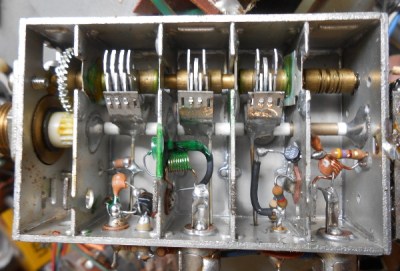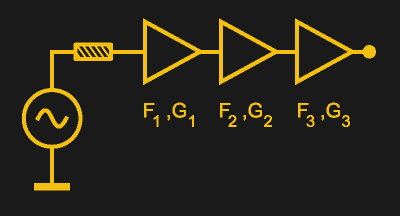There are many ways in which one’s youth can be misspent, most of which people wish they’d done when they get older and look back on their own relatively boring formative years. I misspent my youth pulling TV sets out of dumpsters and fixing them or using their parts in my projects. I recognise with hindsight that there might have been a few things I could have done with more street cred, but for me, it was broken TVs.
TV Pictures From More Than Just Down The Road

As a radio enthusiast at the time I would zero in on the RF side of the circuit. Here in the UK, that is a UHF tuner and a 36 MHz IF strip. I would tweak and modify them endlessly, making antenna amplifiers, UHF transmitters, 70 cm amateur TV gear, and memorably even a rudimentary spectrum analyser that would give a plot of the local TV transmitters on my oscilloscope screen.
In particular I was fascinated by DXTV, the idea that during a significant enough atmospheric “lift” I might snag stations from miles away, a distant part of the country perhaps, or even from Mainland Europe. In this I was largely unsuccessful beyond seeing a very snowy version of the local news in Norwich from time to time, but along the way I learned a huge amount about how radio works, and in particular about the effect of electrical noise on receiver performance.
It’s easy to forget about noise when watching a modern digital TV, because if there is no TV channel on the screen there will always be something such as the program guide or other graphics there instead. When an analogue TV had no channel to display, it would instead show you whatever random noise its receiver could resolve, a “snow” on the screen accompanied by the whooshing sound of white noise on the speaker. If the set was tuned to a transmitter from way beyond its normal range then the noise level would be of a similar magnitude to that of the signal, and the picture and sound would be there but with visible snow and audible noise.
I soon learned that if I added an amplifier between my antenna and the TV I could get a stronger signal, but the results were disappointing. I was soon departing down the rabbit hole of better antenna amplifier design, tweaking cavity tuners to make tunable amplifiers, and seeing out the particularly prized at the time MOSFET tuners to donate their dual-gate BF981 transistors. Without realising it I was learning about noise and its effect on receiver performance, and a few years later when I was an electronic engineering student I would learn some of the theory and maths behind it.
The First Amplifier In The Chain Affects All That Follow

What I learned was the Friis noise equation, named for the Danish born engineer Harald Friis who worked for Bell Labs through much of the mid 20th century. It takes the noise factor, the ratio of output to input noise for a chain of amplifiers, and derives it from the individual noise factors and gains of each of its parts. What this does is teach the novice engineer about the effect of the gain in each stage in amplifying the noise from the previous stage as well as in adding its own noise to the pile. Thus the noise contributed by the first amplifier in the chain is amplified by all the others, and contributes most to the final result.
As can be seen from the formula, F1 is the noise figure of the first amplifier, and it is the only member of the progression that is not a fraction. Thus it has the most influence on the overall noise figure of the complete system, and here was where I discovered the value of the good quality preamp back in my DXTV days. As the first component my off-air signal encountered, its noise figure had the most effect on the performance of the rest of the system, and thus the most effect on that snow in my low-signal picture. My tunable cavity BF981 MOSFET preamp might have been annoying to use because it required retuning along with every channel shift of the TV, but its superior performance over the bipolar transistor in the TV tuner greatly reduced the system noise.
If your work lies in the realm of microcontrollers and digital circuits you may have less use for this equation than I did, but since it applies to many more situations than my teenage DXTV setup it is still a very useful thing to have some knowledge of. After all, every analogue system can be beset by noise!
Header image: Mysid / Public domain
via Radio Hacks – Hackaday https://ift.tt/2WNTMqu
No comments:
Post a Comment